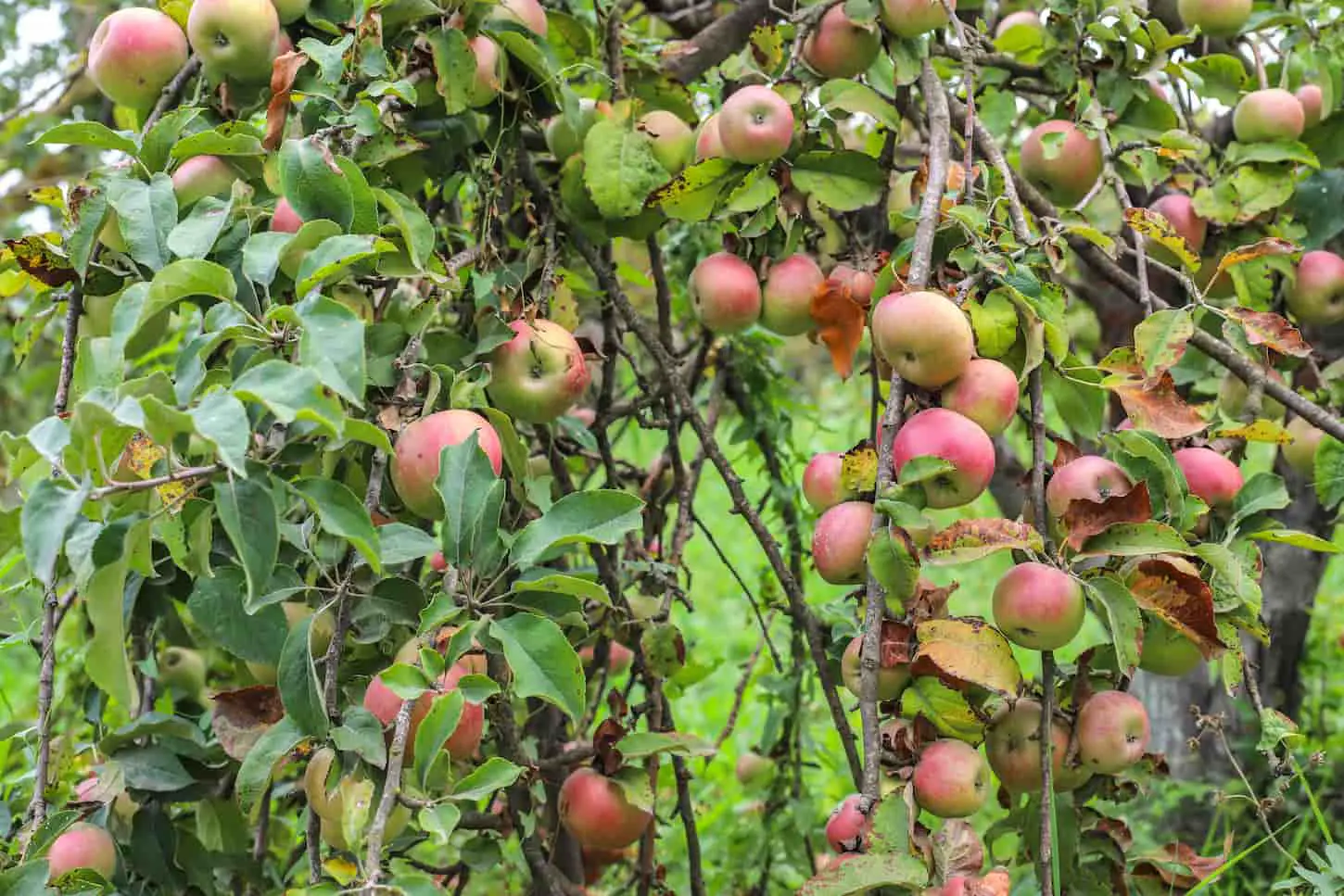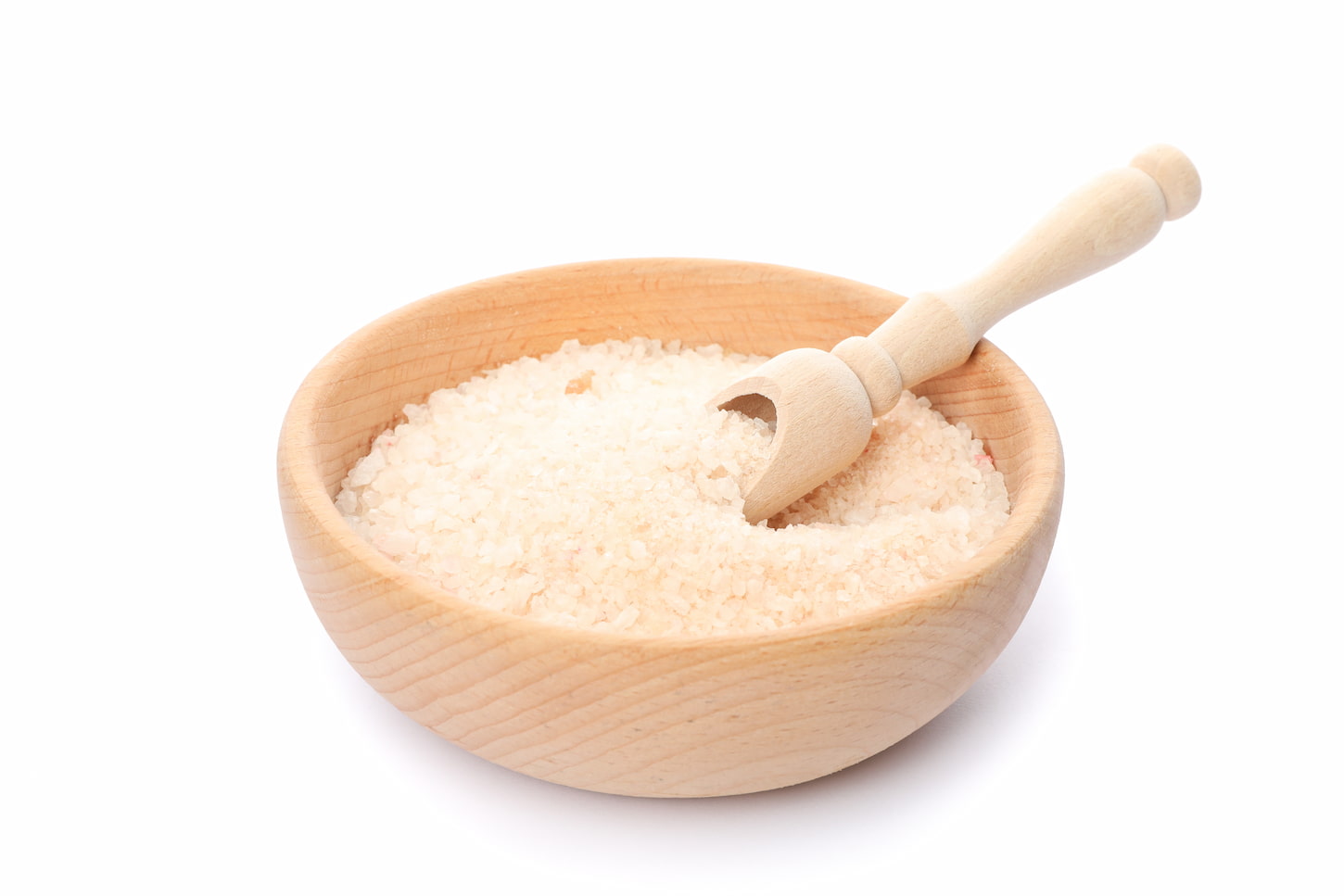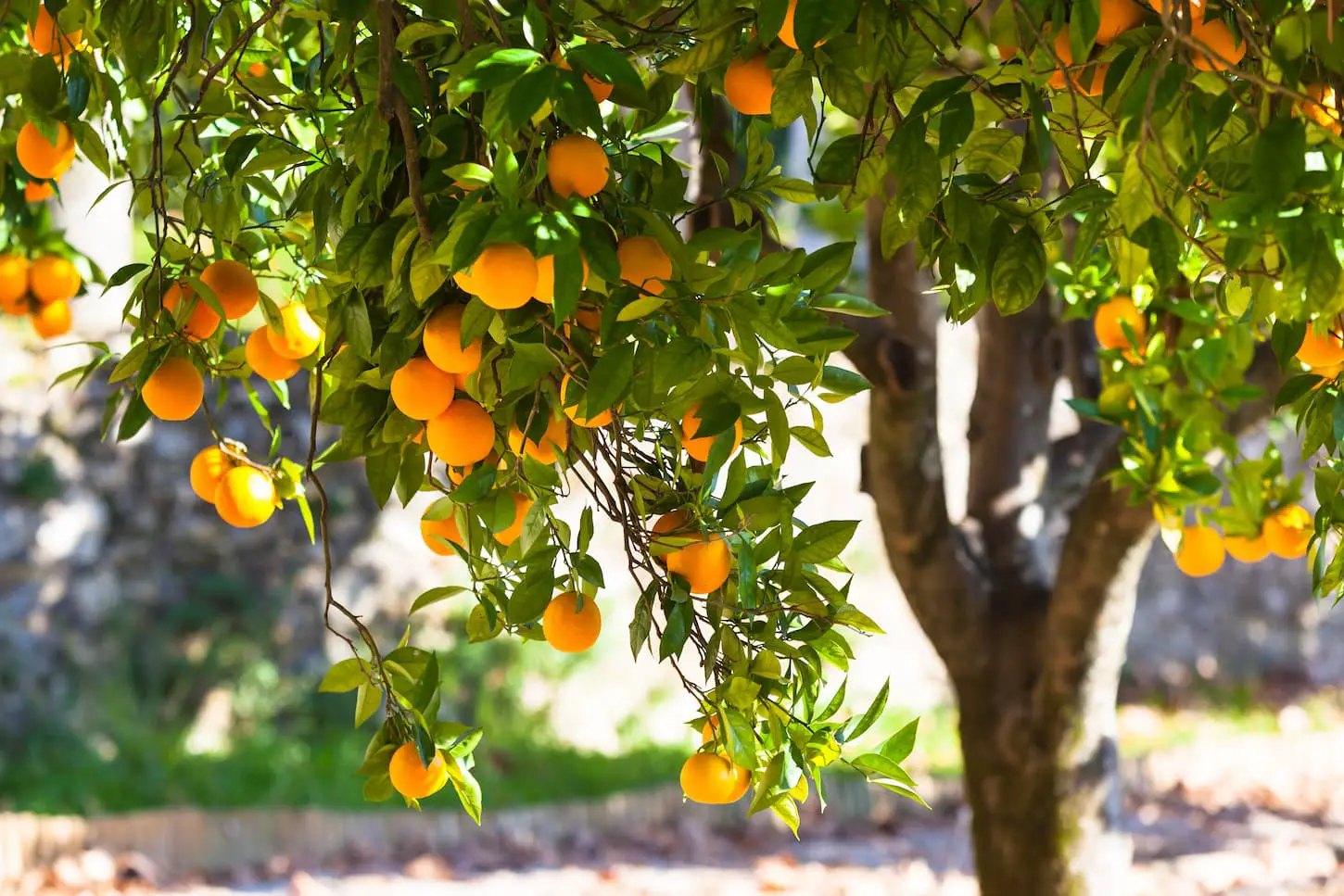Magnesium Sulfate, normally referred to as Epsom salt, is an organic mineral made up of magnesium, sulfur, and oxygen. Since the product’s name has ‘salt’ in it, many believe that adding this product will cause salinity and destroy their plants and gardens. However, this is a myth! Epsom salt has actually been proclaimed to be very beneficial for the growth and development of small plants, but the question remains – should you use Epsom salt on fruit trees?
Epsom salts may be used to fertilize fruit trees that are in soils deficient or low in magnesium and salt. Epsom salt should not be used if the soil around fruit trees is deficient in calcium, manganese, boron, or iron, as the Epsom salts may prevent the uptake of those nutrients.
Ready to get your backyard homestead nerdy on about Epsom salts for your fruit trees? Let’s do this. But make sure you get your soil analyzed first – that way, you’ll know for sure if your trees need Epsom salts as a fertilizer or not.

Is Epsom Salt Good for Fruit Trees?
Epsom salt has been touted to be quite productive for fruit trees. The magnesium component of the salt is very effective in boosting the formation of chlorophyll molecules in the trees. Chlorophyll molecules play a central role in the photosynthesis process, during which leaves absorb energy from sunlight. So, the higher the chlorophyll level, the more the absorption of energy and the better the growth of the trees.
The addition of Epsom salt also results in greener leaves; the increase in energy due to better photosynthesis prevents leaves from shedding early. Leaves are shed when they do not get the required amount of nutrients to survive. When there is an increase in energy, it helps the trees to spread nutrients to every corner of the tree, thereby increasing the chances of survival of every distant leaf.
The color and sweetness of the fruits have also been observed to increase significantly after the routine application of Epsom salt. Higher fruit production, especially in the citrus trees, has also been attributed to the usage of Epsom salt.
Epsom salt can also benefit plants by increasing the absorption of other nutrients. In addition to magnesium and sulfate, fruit trees require other nutrients like potassium, phosphorous, and nitrogen. Epsom salt helps the intake of these nutrients by strengthening the stem and roots of the fruit trees.
When Should I Use Epsom Salt on Fruit Trees?
There are a few situations where Epsom salt can play an instrumental role in plant growth. One is during the process of transplanting. Transplanting is the process in which a plant or a tree is moved from its original location and replanted in a new location. When a transplanted tree is unable to form a substantial root system, it can have transplant shock. Due to the lack of sufficient rooting, these plants and trees can become saggy.
To prevent transplant shock from severely damaging the tree, Epsom salt is applied to the hole of the transplant site. After adding the salt, a layer of dirt and soil is placed to prevent the tree’s roots from coming into direct contact with the salt, and then the tree is replanted. The application of the Epsom salt minimizes the chance of transplant shock by allowing the roots to maximize their intake of nutrients from the soil.
Another scenario where you should consider applying Epsom salt is when your tree leaves start to get brown or yellow for no apparent reason. Sometimes, leaves start to shed at an abnormal rate and get curled both inwards and outwards, and some trees can face stunted growth. All these ailments are indications of deficiency of one nutrient or another. Applying the right amount of Epsom salt with the right frequency can help the tree absorb more energy and more nutrients to treat the affected areas, helping the plant to regain its strength.
For example, when citrus fruit trees are deficient in nutrients, they start shedding leaves and decrease the amount of fruit production per tree. Similarly, magnesium deficiency in pome fruit trees causes their leaves to turn brown and shed quickly and can result in an inverted V-shape in the older leaves.
Apart from application in the case of transplanting and ailments, routine usage of salt can also ensure optimized growth with strong roots and greener leaves.

How to Use Epsom Salt on Fruit Trees
There are a variety of recommendations regarding the amount and frequency of application of Epsom salt. These recommendations vary based on the type of soil, the kind of tree, and the height of a particular tree.
Epsom salt, being granular, can be either utilized in its dry form or can be mixed with water before its application to the trees. The dissolved solution is more quickly absorbed by the trees, so if you want a swift boost of nutrition for your trees, consider dissolving the salt in water.
For a generic application, you can dissolve 1 tablespoon of salt in 1 gallon of water and apply the solution generously to the roots of the fruit tree. If you want to use the Epsom salt in its dry form, it is advised to sprinkle 2 tablespoons of salt for every 9 square feet of the tree area.
Now, let’s look at a few specific approaches to salt application for different types of fruit trees and plants.
| Tree Type | Mixture Ratio | Application |
|---|---|---|
| Trees in general | 1 tablespoon Epsom salt in 1 gallon of water | Apply to the roots of the tree |
| Trees in general | 2 tablespoons of dry Epsom salt | Sprinkle 2 tablespoons for every 9 square feet of the tree area. |
| Citrus fruit tree | 10:1:1 (water, Epsom salt, calcium nitrate) | Foliar spray technique with 8 gallons per tree |
| Pome fruit trees | 1/2 cup Epsom salt in water | |
| New fruit trees (before planting) | 1 tablespoon dry Epsom salt | Sprinkle it into the hole before planting the tree |
| Newly planted fruit trees | 1 tablespoon Epsom salt in 1 gallon of water | Spray towards the roots |
| Blossoming fruit trees | 1 tablespoon Epsom salt in 1 gallon of water | Spray towards the roots |
Epsom salt can also be used for flowering plants. And while flowering plants aren’t the main focus of this article, I wanted to share the research I found. But I’ll keep it brief.
- Tomato plants, especially those which are planted in pots, are normally deficient in magnesium. If you want juicy and healthy tomatoes, then it is advised to make a mixture of two tablespoons and one liter of water and apply this solution to the plants every two weeks. It is recommended to apply this solution after you have irrigated your fruit trees.
- If you want to plant roses in your garden, for example, it is recommended to sprinkle a couple of tablespoons on the soil bed. Alternatively, immersing unplanted rose bushes in half a cup of Epsom salt per 5 liters of water will do a world of good for the roots. It has also been observed that applying Epsom salt to the roots of the shrubs once every two weeks can assist in proper growth.
- The application of Epsom salt can be useful for houseplants as well. Mixing half a cup of salt in ten liters of water and feeding the plants on monthly basis can drastically improve their growth.
Apart from the routine application of Epsom salt, you may also use it on an as-needed basis. If you observe that the leaves at the lower side of your fruit trees are becoming more and more yellow, especially around the vein area of the leaves, then it is recommended to use a tablespoon of dry Epsom salt on the base of the tree once every month, until the leaves regain their color. The same approach can be used for curled leaves as well.
Here is a good video on YouTube where you can learn how to use Epsom Salt on fruit trees.

What Does Epsom Salt Do for Trees?
Epsom salt has a number of benefits for plants. It can actually help plants and trees as early as the seed germination process. During this process, some amount of sulfur is depleted which can be recovered by adding a tablespoon of salt to a gallon of water and applying it after seeding. The nutrients in Epsom salt can also help in reinforcing the cell walls of the leaves, as well as build a self-defense mechanism against unwanted organisms.
Epsom salt is also known to neutralize the pH of the soil, which is beneficial since many plants do not grow in alkaline soil. If your soil has a pH of more than 7.5, a mixture of Epsom salt can help reduce it to a healthy pH for your plants. Note that it is always important to first test the pH of the soil before using Epsom salt because if the soil is already acidic, adding Epsom will only deteriorate the situation further.
Epsom salt is also known to deter some pests, like slugs, which can adversely affect plants and trees. However, it is not a designated pesticide, and the reported success is anecdotal. Many actually believe that using Epsom salt as a pest deterrent does have any merit since no registered pesticides are made up of magnesium sulfate.
Along with benefits, Epsom salt does have some potential drawbacks which should be considered before using it. Epsom salt, as the name suggests, is essentially salt and excessive use of it can cause salt injuries to plants and trees. Research has also shown that the redundant use of Epsom salt can negatively affect the growth of trees instead of supporting it.
While Epsom salt is a source of important nutrients, unnecessary use of the product can cause the inadequacy of other important minerals like calcium, manganese, boron, and iron. Researchers have also found a link between the excessive use of magnesium sulfate and the reduction of important organisms in the soil, like the bacteria which are present to regulate the nitrogen content. Using Epsom salt can also drive aluminum out of the soil, making it possible for plants to absorb this toxic metal that affects their development and growth.
Final Thoughts on Epsom Salts for Fruit Trees
All in all, Epsom salt is an inexpensive and efficient way to get rid of some of the problems faced during gardening. However, Epsom salt should not be considered as a miracle cure for all the deficiencies you see in your plants and trees. As mentioned, it will work wonders when it is applied in the right amount and with the right frequency but should be used with caution.
Another important point to note is that Epsom salt should never be used as the main fertilizer for plants and fruit trees. Although it contains some nutrients needed by plants, it does not contain traces of the main nutrients that trees need, such as Nitrogen, Phosphorous, and Potassium. Epsom salt can help in the absorption of these from the soil but if the soil is already deficient in these nutrients, Epsom salt will not be able to help.
As a general tip, it is a good practice to perform a soil test before applying any fertilizer or supplement, including Epsom salt. The soil test will give you an idea of the nutrient levels present in the soil as well as the overall pH of the soil. Using this information, you will be able to implement an advantageous plant-care routine with minimum chances of side effects.
At the end of the day, as long as you use it with the right frequency and quantity, using Epsom salt may just be the secret to a ripe and healthy fruit tree that you have been looking for.
Want to know the miracle and main fertilizer for pretty much everything in your garden? It’s compost.
And there are a lot of great ways to get your own compost going in your backyard homestead. And a common question that’s asked is about composting cooked veggies. So let’s start small – go read my article on Composting Cooked Veggies: The All-Important Do’s and Don’ts next.
Resources
Learning from your own experience is essential, but learning from others is also intelligent. These are the sources used in this article and our research to be more informed as homesteaders.
- Chalker-Scott, Linda. (2018). EPSOM SALT USE IN HOME GARDENS AND LANDSCAPES.
- Ford, E.M. 1968. The Response to Epsom Salt Sprays of Mature Apple Trees of Three Varieties on Two Contrasting Root-stocks. Journal of Horticultural Science 43:50517.
- Mazher, A.A.M., A.E. Rawya, and N.G.A. El-Aziz. 2006. Effects of Microbien under Salt Stress on Nodulation, Growth and Chemical Constituents of Sesbania aegyptiaca in Sandy Soil. Bulletin of the National Research Centre (Cairo) 31(3):245265.
